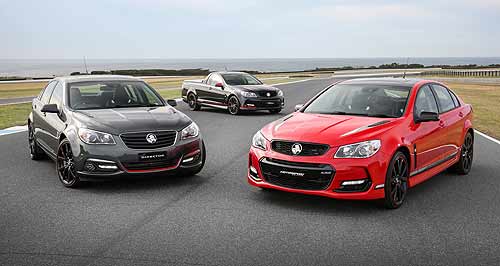Make / Model Search
News - Market Insight - Market Insight 2021Market Insight: Large car flavour slides from graceDisappearing: The once-burgeoning large car sector has largely been eaten up by SUVs as local manufacturing ceased last decade. Legacy of Australia’s past almost disappears from the showroom floorGallery Click to see larger images 18 Jan 2021 By NEIL DOWLING FEW symbols of post-war Australia reflect growing domestic wealth and individual freedom as the progression of sales of “Big Six” family cars.
They became the core of the Australian family life and were responsible not only for the growth in drive-in theatres – and perhaps a population increase – but also the rapid spread of suburbs that flowered from city centres.
With a large car, it gave the ability to cover long distances so motoring holidays proliferated as did the regional hospitality sector.
In the 1950s through to the 1990s, the large family car was the king of vehicle sales.
By 2005, with the growing range of SUVs, the sedan was on the wane. In 2005, the large-car sector represented one-quarter of the year’s new passenger car tally of 608,804.
Last year, the large car sector was less than 2.5 per cent of the passenger car segment and an almost invisible 0.58 per cent of the total vehicle market.
Yet what has changed? Australia remains a country with its major cities clustered with suburbs, a predominant family structure and the constant need to use the car to commute and holiday.
A big vehicle is still in demand but the silhouette has changed, morphing from sedan to SUV.
The demise of the large sedan started in 2005 with 153,244 sales, including the (then) new Holden Commodore VE. Despite rave reviews, the VE didn’t perform as well as expected.
In that year, Holden sold 174,464 with support from the VE and the introduction of its mid-size SUV, the Captiva.
One year later, the vehicle market made a rare slip, losing 25,603 units from 2005 to find 962,666 new owners. Down with it came the passenger car sector, falling by 1.7 per cent, and Holden, a whopping 16 per cent as the large-car sector began to crumple.
The decline in large car sales at Holden was also felt at Ford, with the Falcon sliding from 53,080 sedan and wagon sales in 2005 to 42,390 the following year and in 2007, to 33,941. By 2016, its last year of production, only 4434 cars and wagons were sold.
Much of the slack was taken up by buyers diverted to the more versatile SUVs. Ford’s Territory was selling at about 30 per cent of the Falcon in 2004 but by 2014 it was closing in on doubling the Falcon sales.
At Holden, the Captiva SUV was one-fifth of Commodore sales in 2008 but increased to half the sedan’s sales by 2014.
To show the size of the large-car sector by the involvement of car-makers, in 2009 there were 22 models available, from the sub-$70,000 players such as the Falcon, Commodore and Nissan Maxima, through to the over-$70,000 bracket with the Mercedes-Benz E-Class, Alfa 166, Citroen C6, BMW 5 Series, Audi A6 and Saab 9-5.
By 2014 the number of models fell to 19 and in 2020, to 13 with only three – Kia Stinger, Skoda Superb and remnants of the Holden Commodore – in the under-$70,000 bracket.
The 10 large-car models in the over-$70,000 segment include the Volvo V90 Cross Country, perhaps more suited to the SUV genre, and the Genesis G80.
Australia remains the same country geographically as it did in 1950s and the need to own a car remains as strong. But although the way we travel remains on four wheels, style and marketing have changed what we buy.
It has led to the end of vehicles we once took as the stablemates of our personal transport. Now the SUV is the preferred vehicle choice. What will the market sell 20 years from now?  Read more |
Click to shareMarket Insight articlesResearch Market Insight Motor industry news |













Facebook Twitter Instagram